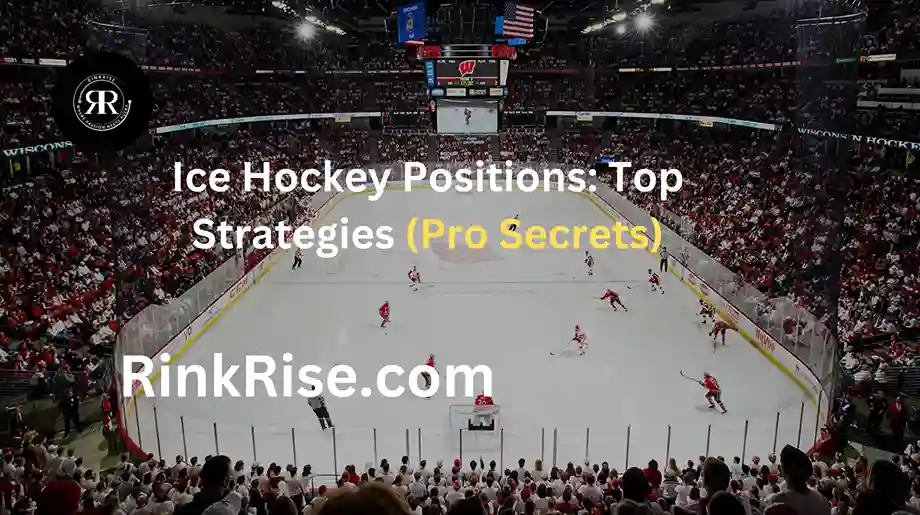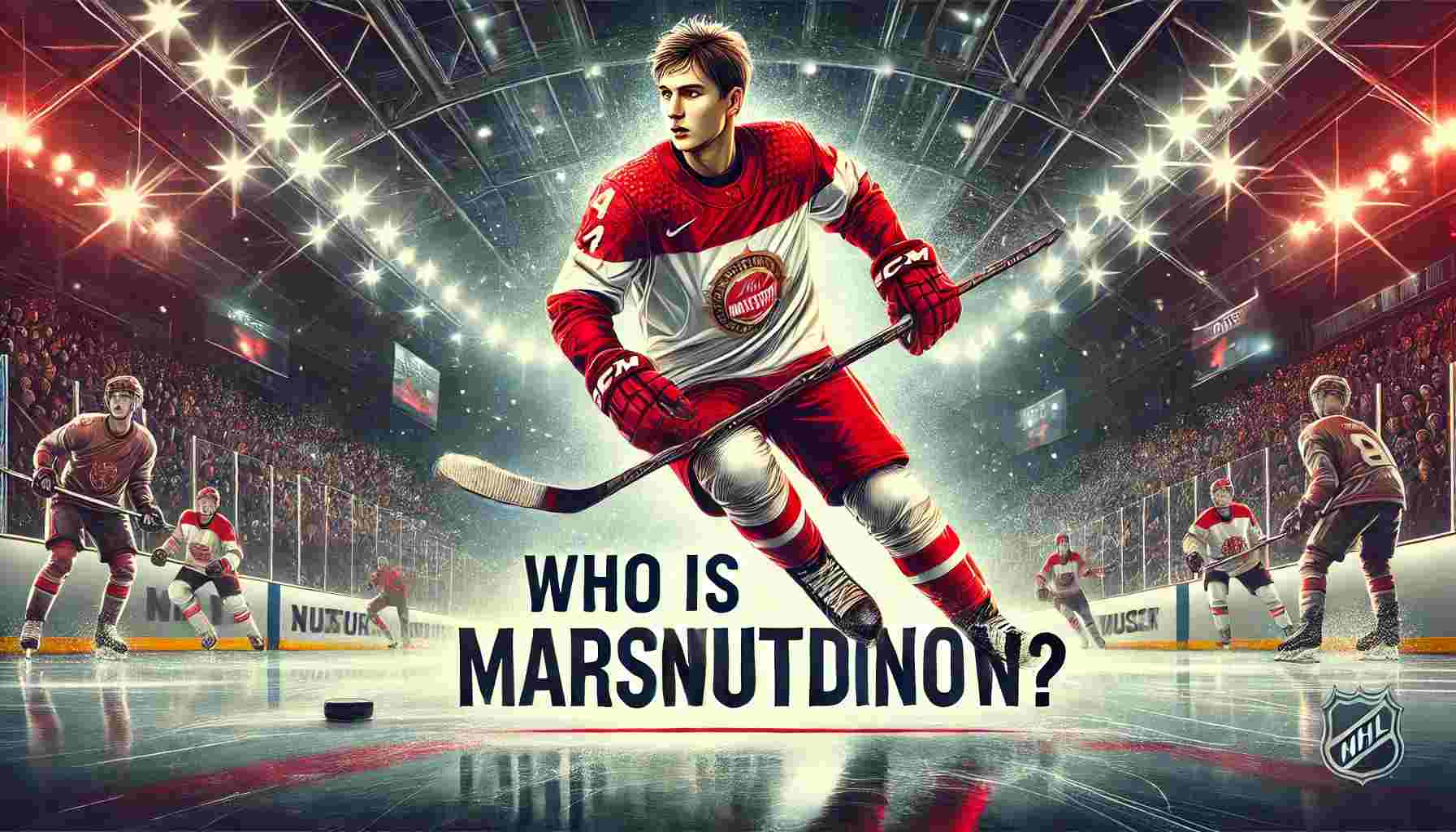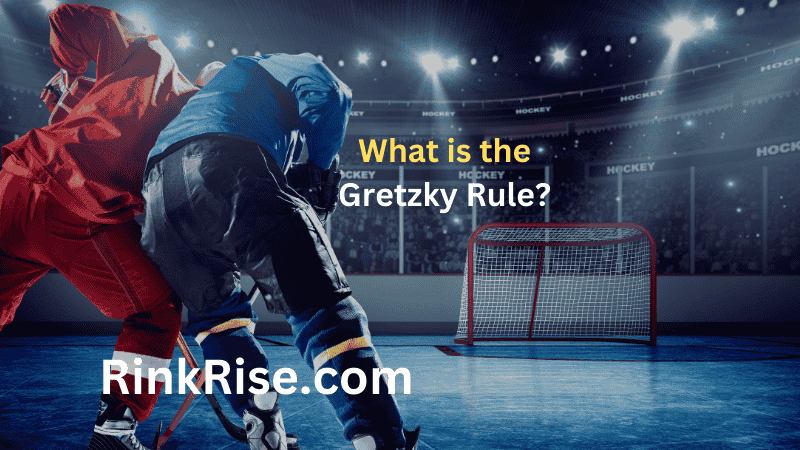Ice Hockey Positions
Ice hockey is a dynamic team sport played on a slick ice surface, demanding a keen understanding of specific player roles. Each of the two competing teams consists of six players on the ice at a time. The players are organized into three main categories: forwards, defensemen, and a goaltender.
The forward group includes the center, left winger, and right winger, who focus on offense. The defensemen, positioned on the left and right, are tasked with protecting their goal area and supporting offensive plays. The goaltender’s primary role is to prevent the opposing team from scoring. A clear grasp of these positions is essential to mastering the tactical aspects of ice hockey.
Essential Roles in Ice Hockey
Ice hockey features six key positions, each crucial for the team’s offensive and defensive strategies. Here’s a simplified breakdown of these roles:
Goaltender: The main defender, tasked with preventing the puck from entering the goal.
Center: Often the team leader on the ice, the center orchestrates play and guides the game’s tempo.
Wingers: These are forwards positioned on the rink’s edges. They are pivotal in the team’s attack, with specific duties:
- Left Winger: Active on the left side, focusing on offensive opportunities from that angle.
- Right Winger: Plays on the right, working in tandem with the left winger to enhance the attack.
Defensemen: Positioned to protect against opposing attacks, they are split into:
- Left Defenseman: Guards the left section of the rink, primarily focusing on defense.
- Right Defenseman: Secures the right side, complementing the left defenseman’s efforts.
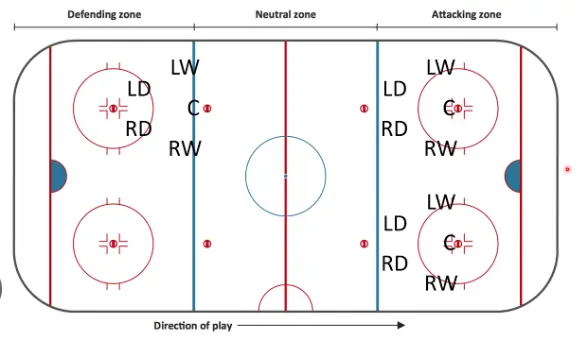
Key Positions and Their Functions in Ice Hockey
Ice hockey teams consist of players assigned specific roles that enhance both the strategy and execution of the game. Here’s a breakdown of these roles tailored for clarity and easy understanding:
- Power Forward: Engages in robust physical play and scoring, usually positioned near the net during offensive actions.
- Two-Way Forward: Proficient in both offense and defense, contributing effectively across the entire rink.
- Enforcer: Focuses on physical play and protection of teammates, often engaging in conflicts to enforce team morale.
- Grinder: Excels in tactical plays in tight areas like corners and along the boards, aimed at disrupting the opponent’s strategy.
- Pest: Known for provoking opponents through physical or verbal actions to distract and destabilize them.
- Swingman: A versatile player who can perform both forward and defenseman roles, providing valuable flexibility.
Positional Overview:
The team is divided into forwards (center and wingers) who primarily attack the opponent’s goal, and defensemen who support the goaltender by shielding the defensive zone. The goaltender is the final defense, tasked with stopping the puck from scoring.
Safety Note:
It’s crucial for every player to wear a high-quality hockey helmet. For guidance on selecting the right helmet, refer to resources on purchasing a hockey helmet to ensure safety during play.
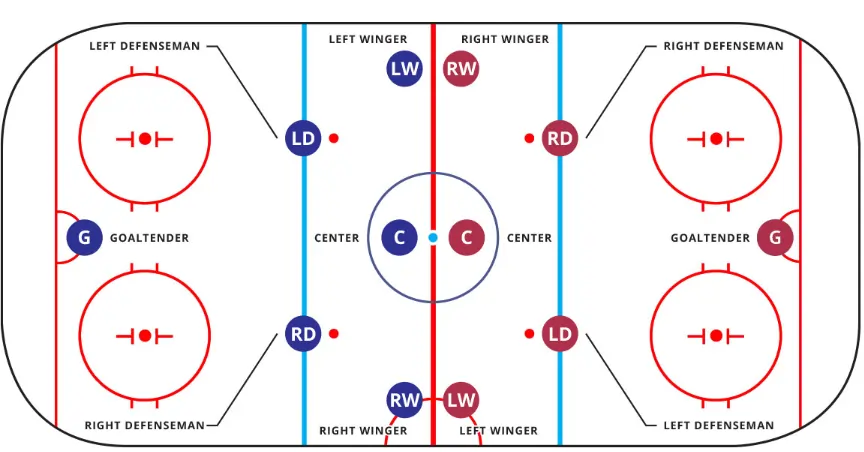
Essential Positions in Ice Hockey: Duties and Skill Sets
Ice hockey features specific roles, each with distinct responsibilities and required skills to excel in the game. This guide simplifies the understanding of these roles:
| Position | Responsibilities | Typical Skills |
|---|---|---|
| Goaltender | Protects the net and prevents the opposing team from scoring. | Agility, Reflexes, Hand-eye coordination |
| Defenseman | Defends the team’s zone, takes the puck away from opponents, passes to forwards. | Physicality, Puck-handling, Skating |
| Centre | Plays a versatile role, takes faceoffs, sets up scoring opportunities. | Faceoff ability, Passing, Defensive awareness |
| Winger | Scores goals, assists center, plays defense. | Speed, Shooting, Stick-handling |
Overview of Ice Hockey Positions and Their Functions
Ice hockey is a sport where each player assumes a specific role, significantly impacting the game’s flow and strategy. This guide will explore the functions and responsibilities of the various positions in hockey, particularly focusing on the forwards.
Hockey Forwards
Forwards in hockey are primarily tasked with scoring goals. This group includes the center, left winger, and right winger, each bringing unique skills and playing crucial roles in both offense and defense.
Center: The Strategic Playmaker
The center acts as the team’s primary playmaker, often compared to a quarterback due to their pivotal role in both attacking and defensive maneuvers. Here are the key responsibilities and strategic positioning of a center:
Responsibilities:
- Initiate plays and lead both forechecks and backchecks.
- Assist defensemen and support wingers in their respective zones.
- Handle face-offs throughout the ice.
- Transition smoothly between offense and defense.
- Exhibit endurance and versatility across the rink.
- Score and set up goals.
Positioning:
- Offensively, centers operate in the middle of the attacking zone, directing plays from the front of the opposing goalie to the edge of the faceoff dots and back to the blue line.
- Defensively, they cover a broad area extending from the front of their net to their blue line, focusing on securing their defensive zone.
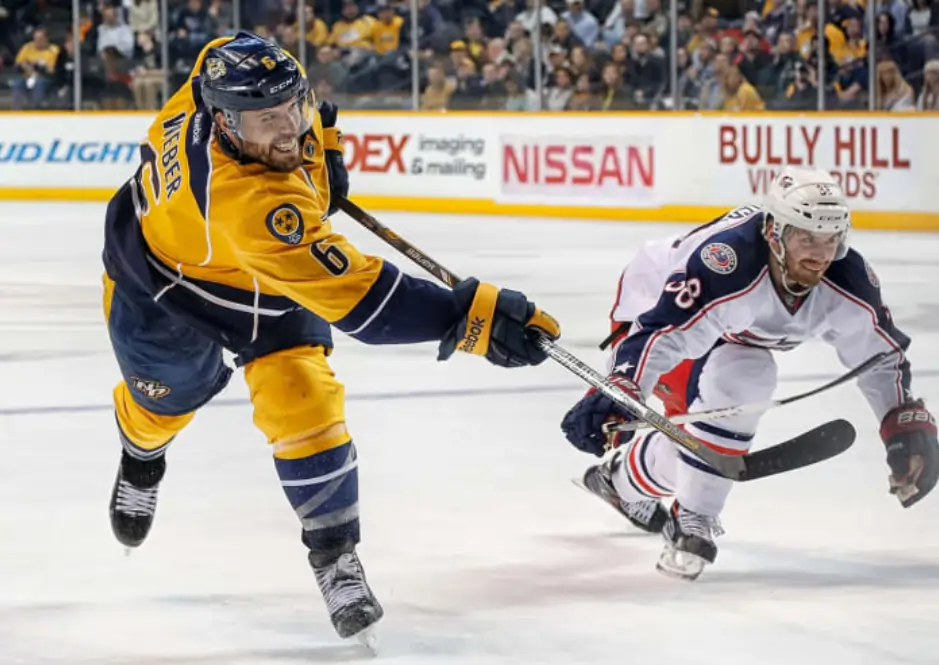
Wingers
Wingers flank the center and are vital for their speed and ability to finish plays. They are positioned on the left and right sides and have distinct roles:
Left Winger:
- Positioned primarily on the left side, focusing on attacking from that flank.
- Responsible for scoring goals with strong shots and maintaining puck control under pressure.
- Requires excellent vision to spot and pass to open teammates.
Right Winger:
- Mirrors the left winger but operates from the right side.
- Known for having some of the best shooting skills on the team.
- Combines strength and skill to win puck battles along the boards.
Responsibilities:
- Shoot accurately at the opponent’s net.
- Provide pivotal passes to the center.
- Compete for puck control in corner skirmishes.
- Advance the puck into offensive territory and set up plays.
- Challenge and lock down opposing defensemen.
- Intercept passes and open up for transitional plays down the ice.
Positioning:
- In the offensive zone, wingers are active near the left and right faceoff circles extending to the corners, positioning themselves strategically to direct plays toward the opponent’s goal.
- In the defensive zone, they focus on containing the opposing team’s defensemen, extending their coverage to the blue line.

Defensemen
In ice hockey, each team has two defensemen who play crucial roles in protecting their side of the ice and preventing the opposing team from scoring. This section explores the distinct responsibilities, skills, and positioning of the left and right defensemen.
Key Responsibilities of Defensemen
Defensemen are tasked with several critical responsibilities during the game:
- Preventing Goals: Their primary duty is to stop the opposing team from scoring.
- Blocking Shots: They actively block shots from the opposing players.
- Contesting Opponents: Engage in physical battles with opposing wingers, especially in corner areas.
- Covering Lanes: Identify and cover open lanes to disrupt the opponent’s play.
- Zone Control: Manage and control the play within the defensive zone to maintain team advantage.
Positional Skills of Defensemen
Defensemen are expected to excel in several skills that enhance their effectiveness on the ice:
- Backward Skating: They are adept at skating backward, allowing them to effectively counter opposing forwards.
- Hockey IQ: Possess a high level of hockey intelligence to anticipate and read the opponent’s moves.
- Passing and Shooting: Exhibit strong abilities in passing and accurate shooting, contributing to both defensive stands and offensive opportunities.
Strategic Positioning
The positioning of defensemen varies depending on whether they are in the defensive or offensive zone:
- Defensive Zone: They focus on securing the left and right corners up to the center faceoff dot, effectively locking down their half of the ice.
- Offensive Zone: In offensive plays, defensemen position themselves at the top left and right sides of the zone, extending from center ice to the blue line and up to the top of each side. This placement allows them to support offensive plays while remaining ready to transition back to defense.
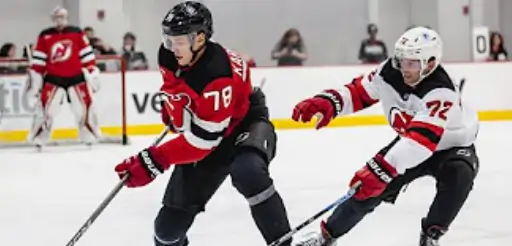
Hockey Goalie (Goaltender)
The main goal of the Goalie is to defend against the opponent’s shots. A strong goalie allows his team to play more outrageously and becomes their strength in critical situations.
Understanding the Role of a Hockey Goaltender
The goaltender, or goalie, is a pivotal player in ice hockey, primarily responsible for defending the net against incoming shots. A proficient goaltender can significantly empower their team, providing confidence to take more offensive risks and offering stability during high-pressure situations.
Skills of a Goaltender
A goalie’s repertoire includes several critical skills:
- Rebound Control: Managing the puck after an initial save to prevent further scoring chances.
- Angle Management: Skillfully positioning themselves to reduce the shooting angles available to the opponent.
- Visionary Assistance: Assisting teammates by tracking play developments behind them.
- Breakout Passes: Contributing to offensive plays by passing the puck to teammates.
- Advanced Skating: Navigating the ice effectively, which is essential for maintaining position and making saves.
Goaltending Styles
Goaltenders have evolved distinct styles to enhance their effectiveness:
- Stand-up Style: Older style where the goalie remains upright, making saves without kneeling.
- Hybrid Style: Combines elements of stand-up and more modern techniques, involving dropping to the knees to control rebounds more effectively.
- Butterfly Style: Currently the most prevalent, where the goalie uses knee drops to cover the lower portion of the net extensively. This style is subdivided into:
- Hybrid Butterfly: A mix of traditional and modern methods.
- Athletic Butterfly: Characterized by quick, dynamic movements to block shots.
Equipment Used by Goaltenders
Goaltenders wear specialized equipment to enhance protection and performance, including:
- Goalie Stick: Wider than regular sticks for better puck control.
- Leg Pads: To protect legs and help close off the lower net area.
- Protective Helmet: Essential for head safety.
- Glove and Blocker: For catching and deflecting pucks.
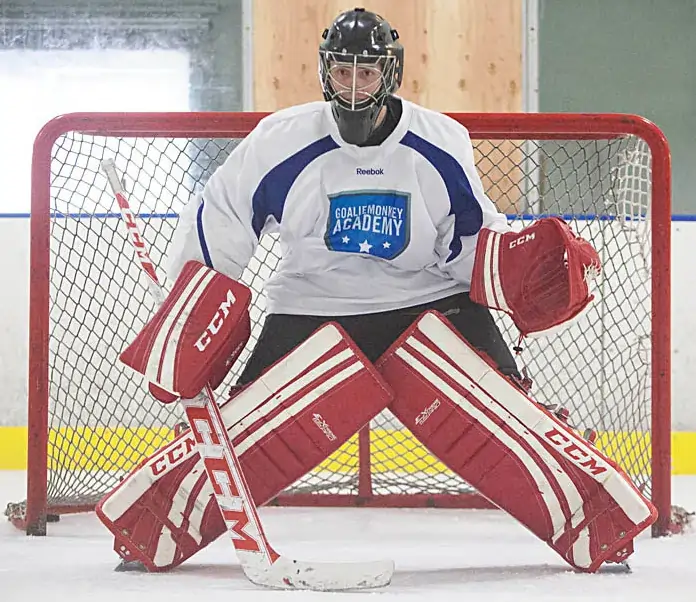
Special Teams and Game Dynamics
Understanding NHL game strategies like the power play and penalty kill is crucial:
- Power Play: Occurs when one team has a numerical advantage due to an opponent’s penalty, providing a higher chance to score.
- Penalty Kill: The team plays with fewer players, aiming to prevent the opponent from scoring during the power play.
Key Leadership Roles in Ice Hockey
In ice hockey, a team’s success is influenced by more than just the players’ performance on the ice. Leadership and strategic management play essential roles in shaping the team’s dynamics and effectiveness.
Captain: The Team Leader
The captain stands as the pivotal leader within the team, acting as the primary liaison between the players and the game officials. This role involves guiding the team, setting the tone for collaboration, and ensuring smooth communication during matches.
Coach: Strategist and Planner
The coach is responsible for crafting the game strategy and overseeing its execution. This includes designing play tactics, making real-time decisions during games, and adjusting strategies as needed to enhance team performance.
Official: The Rule Enforcer
An official’s role is critical in maintaining the integrity of the game. They ensure that the game adheres to established rules, making crucial decisions on penalties and other key aspects of gameplay that affect the flow and outcome of the match.
Read Also: What is the Top Scoring Position in Hockey?
Conclusion
Ice hockey is a team sport that requires players to adopt specific roles, including forwards, defensemen, and goaltenders, each with distinct responsibilities that contribute to the team’s overall strategy and success. Leadership roles such as the captain and coach also play a crucial part in guiding the team and strategizing gameplay, supported by officials who ensure the rules are adhered to. Together, these elements combine to create a dynamic and strategically complex sport.
FAQ’s: Ice Hockey Positions
How many positions are there in hockey?
There are six positions in hockey, including the goalie, right winger, left winger, center, right defenseman, and left defenseman. Each team fields six players on the ice at any given time, totaling no more than 12 players actively participating in the game.
What is the hardest position in hockey?
Goaltenders are widely considered the hardest position in hockey, especially at elite levels. Despite being seemingly straightforward for newcomers—preventing the puck from crossing the goal line—the role of a goaltender is among the most challenging in professional sports.
Are there 11 players in a hockey team?
Yes, a hockey team typically consists of 11 players. This includes one goalkeeper and 10 outfield players, who are designated as defenders, midfielders, and attackers. The specific number of players in each role can vary depending on the team’s strategy and the current state of play.
What are the three main positions in floor hockey?
The three main positions in floor hockey are the goalie, the center, and the defensemen. Each team has one goalie who protects the goal, one center who handles face-offs and leads offensive plays, and two defensemen who focus on defending their team’s side of the court.
What does the number 1 signify in hockey?
In hockey, the number 1 is traditionally reserved for goalies. Other common goalie numbers include 30, 31, and 35.
What does the “C” represent in hockey?
In hockey, the “C” on a player’s sweater stands for “captain.” Each team designates one captain and typically two or three alternate captains. The captain represents the team in discussions with officials, especially when on the ice. Alternate captains assume this role when the captain is on the bench. These alternates wear an “A” on their sweaters to indicate their status.
What is the weak side in hockey?
The weak side in hockey refers to the side of the ice opposite to where the puck and most of the players are currently positioned, known as the strong side. Teams often move the puck to the weak side to evade defensive pressure and create scoring opportunities.
Where do you position your weakest player in hockey?
In hockey, it is strategic to place a weaker attacking player on the left side. This placement is because most attacks are typically orchestrated from the right side, where stronger players are more effective in setting up plays. The left side offers a slightly easier scoring opportunity for less skilled players, reducing the pressure on them to penetrate through more challenging defenses.
